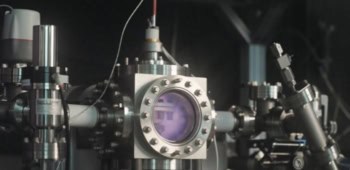
A novel fusion device based at the University of Seville in Spain has achieved its first plasma. The SMall Aspect Ratio Tokamak (SMART) is a spherical tokamak that can operate with a “negative triangularity” – the first spherical tokamak specifically designed to do so. Work performed on the machine could be useful when designing compact fusion power plants based on spherical tokamak technology.
SMART has been constructed by the University of Seville’s Plasma Science and Fusion Technology Laboratory. With a vessel dimension of 1.6 × 1.6 m, SMART has a 30 cm diameter solenoid wrapped around 12 toroidal field coils while eight poloidal field coils are used to shape the plasma.
Triangularity refers to the shape of the plasma relative to the tokamak. The cross section of the plasma in a tokamak is typically shaped like a “D”. When the straight part of the D faces the centre of the tokamak, it is said to have positive triangularity. When the curved part of the plasma faces the centre, however, the plasma has negative triangularity.
It is thought that negative triangularity configurations can better suppress plasma instabilities that expel particles and energy from the plasma, helping to prevent damage to the tokamak wall.
Last year, researchers at the University of Seville began to prepare the tokamak’s inner walls for a high pressure plasma by heating argon gas with microwaves. When those tests were successful, engineers then worked toward producing the first plasma.
“This is an important achievement for the entire team as we are now entering the operational phase,” notes SMART principal investigator Manuel García Muñoz. “The SMART approach is a potential game changer with attractive fusion performance and power handling for future compact fusion reactors. We have exciting times ahead.”



